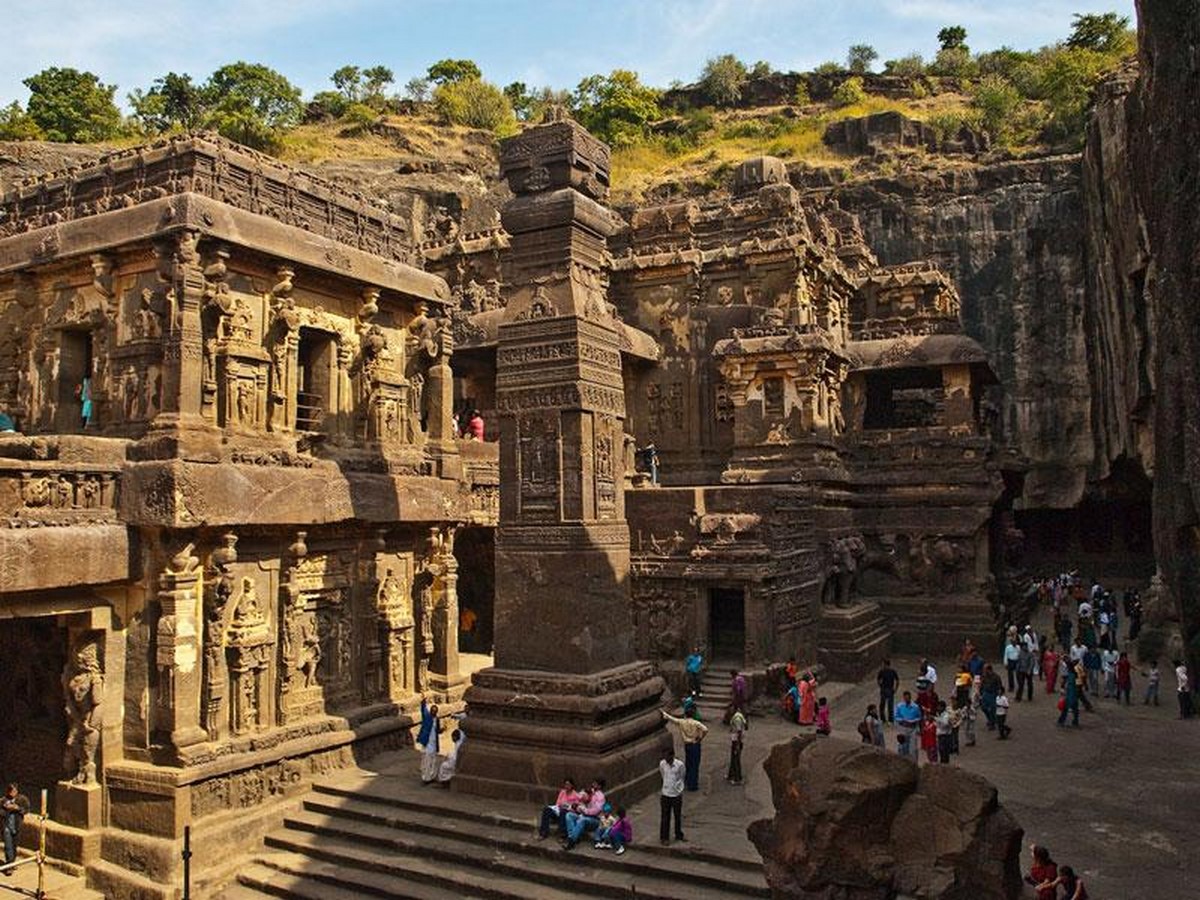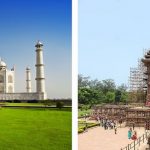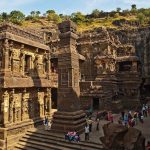Heritage and Public buildings – India, as a nation, consists of multilingual, multi-religions and multicultural populations. In India, terms such as diversity, secularism, democracy and customs are used indifferently. These customs and lifestyles are rooted in our ancient scriptures and buildings. India is proud of its culture and its citizens try to preserve it by passing it on from generation to generation. However, with the world getting smaller the narratives of these customs and practices are blurring. The responsibility of preserving the culture lies in the hands of the physical and the most tangible elements, our buildings.
This essay discusses
- What does built heritage means in India?
- Why is it important to conserve the built heritage?
- How do Indian cities conserve their built heritage?
What is a Heritage Public Building?
The built heritage is evidence of the evolution of culture and places. The built heritage not only represents who we are and where we come from but also helps to spread knowledge and awareness of ancient practices and customs. India gave birth to brilliant architects such as Ashoka, the Harappan planners and Krishnadeva Raya, who have built temples, mosques and monuments which last till date. However, the history of the great Indian architecture dates back more than 5000 years. The heavenly architects, Vishvakarman, Maya, Tvashtar and Manu, and the ancient texts and scripture have inspired and continue to inspire generations till today.
The built heritage of India consists of temples, mosques, public halls, markets, palaces, gardens and water tanks. These buildings are known for their proportions, public utility and the culture they represent in the form of carvings, paintings and wall art. According to the Ministry of Culture, Government of India, more than 3650 heritage buildings are of public importance in India. The Ministry of Culture is also responsible to preserve, conserve and spread awareness of the built heritage. More than 40 sites in India are listed under UNESCO world heritage sites, out of which 32 are categorized under built heritage. Among the most popular and commonly visited heritage, public buildings in India are the Ajanta Caves, Ellora Caves, Agra Fort, Taj Mahal and various sites at Hampi.


Why is it important to conserve Built Heritage?
Like any other tangible heritage, buildings and the built heritage also deteriorate due to several reasons. Some of the common reasons are changing climates, human-created pollution, natural disasters such as floods, earthquakes, and cyclones, biological factors such as fungus and changes in groundwater, salts and minerals. While deterioration is instinctive, conserving built heritage to protect the identity and culture of the place are entailed. In a multicultural nation like India, people grow up listening to mythological stories, fables and historic events that glorify our past. We learn from the past, their achievements and their mistakes both are valuable. The generations that have lived before have given us a well-constructed prescription for life, the responsibility to improve that lies on our shoulders. The built heritage gives us solid and visual evidence of past lifestyles and demands to take the culture ahead from there.
The advantages of conserving the built heritage are many. The built heritage has proven to support and encourage local businesses and hence, promote local economies. The beauty of the built heritage, when maintained well, enhances the regional beauty. Consequently, it attracts tourism which again inflates local economies and the value of the region. The popular concept of ‘adaptively reusing’ built heritage meets the sustainable goals of the United Nation of building sustainable communities. Additionally, the built heritage is an excellent educational resource for people to implement inclusiveness and harbour options to adapt and mitigate climate change.
How do Indian cities conserve their heritage public buildings?
The Archaeological Survey of India, under the Ministry of Culture, is responsible for conserving the tangible and intangible heritage of the nation. Various schemes have been implemented in the past decade led by the Ministry of Culture. These schemes fund conservation activities and also spread awareness regarding the importance of the nation’s heritage.
One of the completed heritage conservation works in India is ‘Raja ka Mahal’ in Jaisalmer, Rajasthan. The fort was built in 1156 and is a living fort, meaning it is still occupied by the family and around 5000 people work and live in and around the fort. The life of these 5000 people depends on the fort. Unfortunately, suffered from great structural damage from the earthquake of 2001 and 2009. The project was funded by Prince Claus Fund, Cultural Emergency Response (CER) and was successfully completed in 2012. The repairs included damaged foundations, cracked walls, broken beams and damaged interiors. The fort continues to serve as a primary source of economy for its people. Many such projects are under construction in India, most of which are undertaken by semi-government and private institutions such as the International Heritage Cooperation and Intach Architectural Heritage.

References:
Online sources
- Archeological Survey of India. [Website]. Available at: https://asi.nic.in [Accessed on 12/08/2022].
- 40 UNESCO World Heritage Sites in India. [Online]. Available at: https://www.holidify.com/pages/world-heritage-sites-in-india-1629.html [Accessed on 12/08/2022].
- Gandhi, P., Pathak, P. (2021). World Heritage – Why preserve, conserver and protect? [Online]. Available at: https://www.flame.edu.in/in-the-media/world-heritage-why-preserve-conserve-and-protect [Accessed on 12/08/2022].
- Intach Architectural Heritage. [Website]. Available at: http://architecturalheritage.intach.org/?page_id=657 [Accessed on 12/08/2022].
Images/visual mediums
- Anonymous. The Taj Mahal, Agra. The Sun Temple, Konark. Alpha Coders. [Photograph].
- Mukherjee, K. (2022). Ellora Caves, Aurangabad. Trans India Travels. [Photograph].
- Anonymous. Raja ka Mahal. Dreamstime. [Photograph].





















